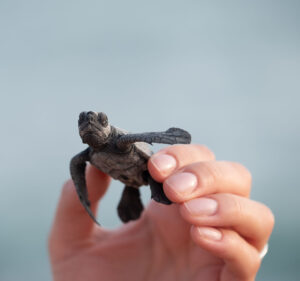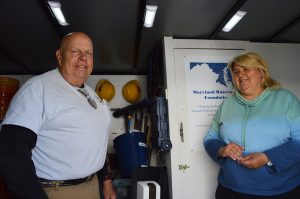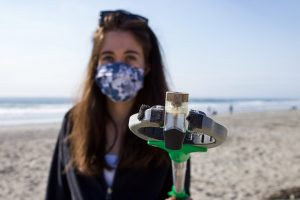
The Block Island wind farm’s 600-foot turbines stand like sentries along the coastal horizon, their blades slowly slicing through the sky. In 2016, the five-turbine project whirled to life generating enough energy to power 17,000 homes. A two-turbine pilot project for the Coastal Virginia Offshore Wind Farm stands just off the coast of Virginia Beach. In March of 2021, the Biden administration announced a goal to deploy 30 gigawatts of offshore wind power by 2030. This support for offshore wind farming is a boon to developers who already hold leases in Eastern seaboard locations.
After more than a decade of planning, a May 2021 approval of the Vineyard Wind Project will allow developers to erect 62 turbines off the coast of Martha’s Vineyard with the capacity to power 400,000+ homes. What at one time seemed like a far-reaching concept, the offshore wind industry is finding its stride along our Eastern coastline.
Beyond the welcome advantages of securing a clean renewable energy resource, how will this impact our boating lifestyle?
ECONOMIC OPPORTUNITIES
Boaters benefit from healthy coastal communities. The offshore wind industry is poised to create numerous jobs. Each project will result in construction, manufacturing, installation, operations and management opportunities. Also, wind farms attract tourism. A recent University of Rhode Island study found a 19% increase in Airbnb leases since Block Island Wind Farm was established. Tourists visit the massive turbines by boat or on the Block Island Ferry. Coastal communities could see renovations or expansions of local ports to create capable support for vessels used to build and install turbines.
BENEFITS FOR FISHING
Commercial and recreational fishermen are on the front lines when any industry or structures involve our waterways. Experienced fishermen have a deep understanding of the marine environment, often playing an important role in monitoring its health. Ongoing studies of current offshore wind farms and their effect on recreational fishing continues to note positive results. The turbine bases function as artificial reefs. Reports of increased populations of mussels, crustaceans and desirable fish species are encouraging for local anglers.

Commercial fishermen have a keen interest in offshore development. Ørsted, a Danish global leader in green energy systems, currently heads six projects on the East Coast. To gain local knowledge and build a relationship with commercial fishermen, Ørsted partnered with Sea Services North America, which gives fishermen the opportunity to diversify their maritime skills and assets. When not fishing, they provide developers with qualified vessels, trained captains and crews, and assist with monitoring and coordination.
Gary Yerman, Seas Services North America fleet manager and co-founder, has worked extensively with Ørsted on the Block Island project. He says Ørsted is by far the safest company with which he has worked, “They don’t cut corners when it comes to safety or the environment, and with my 50 years in this industry that says a lot.” Yerman is aware of concerns about these developments long term. “No one likes change, but we need renewable resources. Wind farms may not be THE answer, but they are certainly part of the answer.” Collaborations like this will be instrumental as developers seek to expand operations while limiting negative impact.
EASY NAVIGATION
Offshore turbines can measure up to 800 feet tall with blades the length of a football field. Offshore wind farms are sure to be an imposing sight. Keep in mind three factors when considering wind farm navigation: location, location, location.
- The location of offshore wind farms is determined by the Bureau of Ocean Energy Management (BOEM). Areas leased to developers through
BOEM are located on the outer Continental Shelf. The unique topography of the Continental Shelf provides acceptable depths for installations three or more miles offshore. This allows for maximizing ocean wind harnessing while avoiding recreational boating areas and shipping channels. - The location of each turbine in relation to one another should be at least one nautical mile. Due to their size, the physics of wind collection and wind wakes, turbines will be significantly separated. This space should allow transiting vessels adequate passage even if encountering other ships.
- The location of each structure will be stationary. Turbines will be well marked, lit and easily identifiable on radar. Eventual placement of numerous turbines should result in a grid of dots on a radar allowing for clear routing through the fields. Boaters should be able to navigate the structures much the same way they would a fixed marker or bridge.
The balance between protecting coastal resources and marine life while accessing clean renewable energy can be difficult. When the Coastal Virginia Wind Farm project expands beyond its pilot phase, over 100 turbines are planned to produce energy for more than 660,000 homes, decreasing carbon emissions by 5 million tons annually. With estimates like this, it is easy to see the value of finding that balance. Boaters are always navigating changing winds, waves, and weather. This mindset will serve us well as we navigate the changes in offshore wind farming on the horizon.





